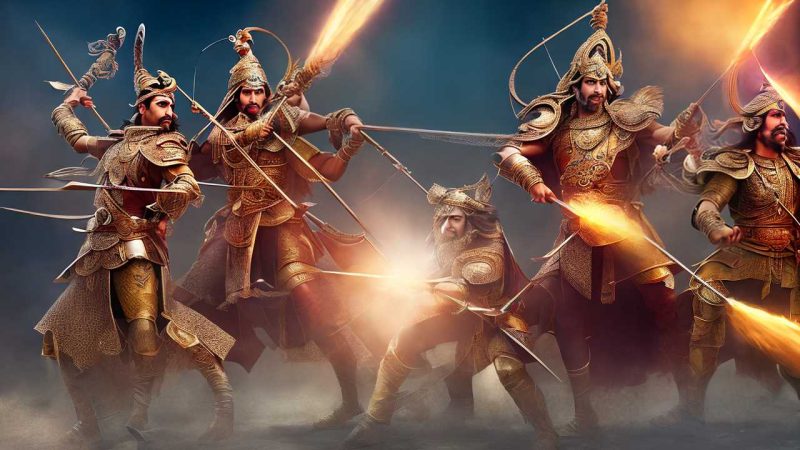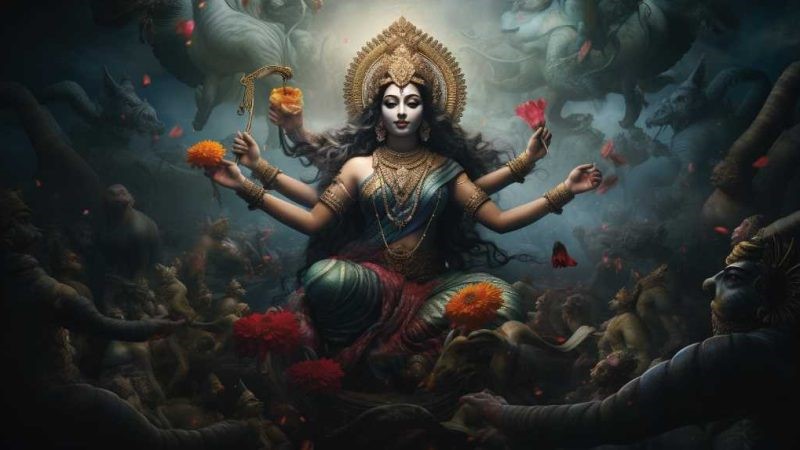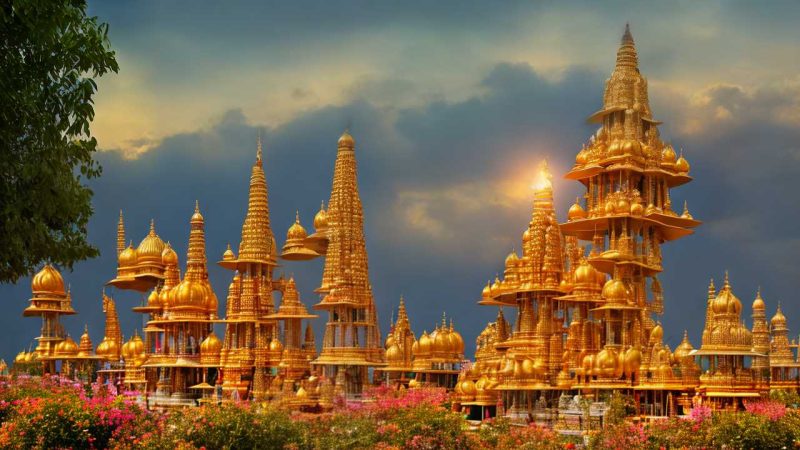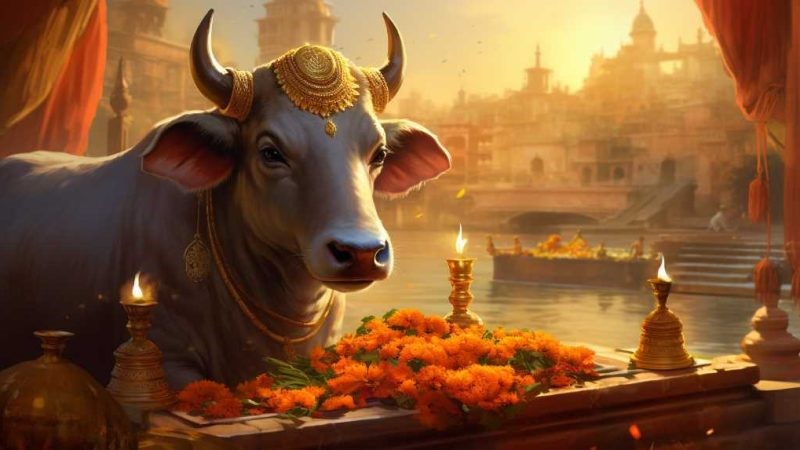The King of Gods Indra in Hindu Mythology
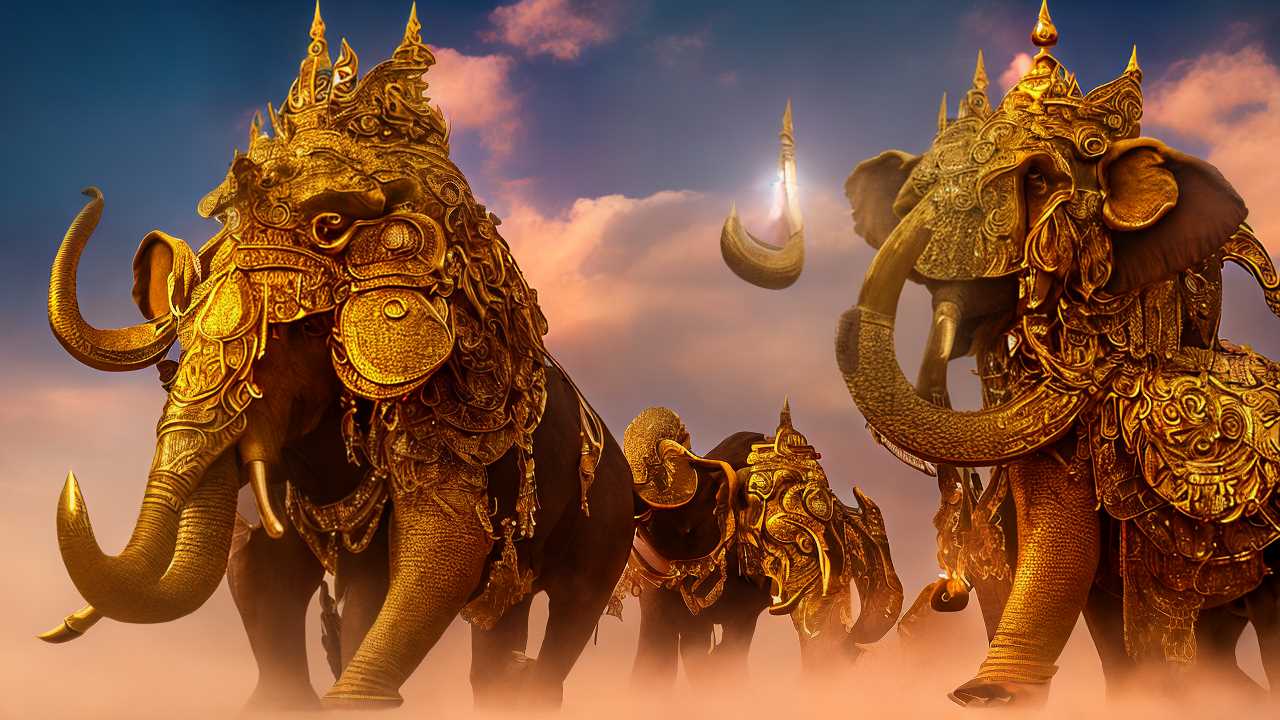
In the stories of Hinduism, Indra is known as the king of gods. He is a powerful character, often shown riding an elephant named Airavata and carrying a thunderbolt called Vajra. Indra represents the warrior’s courage and controls the weather, especially storms and rain. His stories, which show both his bravery and his mistakes, are written in the ancient Vedic texts. These texts are important because they are both religious and historical.
When we look at Indra’s history, appearance, and role among the gods, we see that his story isn’t just about his bravery. It also includes some problems that have changed how people see him over time. People’s respect for Indra and how they think about him have changed, and this tells us a lot about what people in ancient India thought was right and wrong. By looking at Indra’s story, we can learn a lot about the culture and ideas of old Indian society. These lessons are still meaningful today and can teach us about life and spirituality.
Origins and Iconography
Indra is a powerful god from Hindu stories who controls thunder and war. He comes from old writings called the Vedas. When people draw Indra, they give him special symbols: a thunderbolt, an elephant, and sometimes a rainbow. These symbols aren’t just for show; they mean a lot.
The thunderbolt shows his unstoppable strength and his job as a fighter for the gods. Indra rides a white elephant called Airavata, which stands for his rule as king and his link to rain, since Indra is also in charge of the weather. When you see a rainbow in pictures of Indra, it’s to show he’s connected to the sky and has power over nature.
These images of Indra remind us that he was one of the most important gods in the old stories of the Vedas.
Legends of Heroism
The tales of Indra from old Hindu writings tell us about his brave fights and wins over scary demons and other threats to the world’s balance. One famous story is about his fight with the demon Vritra. Vritra had stopped the rivers from flowing, which caused a terrible drought. Indra defeated Vritra with his powerful weapon, the Vajra, and by doing so, he brought back order and helped everyone.
Experts think these stories might be a way to explain things like the rains that help farms grow crops. People praise Indra for his bravery because it shows us the importance of good winning against evil, which is a big part of what Hinduism teaches.
Let’s look at why Indra’s story matters. His victory over Vritra is not just an exciting tale; it represents the idea that nature and life should be in harmony. When Indra defeats the demon and the rivers flow again, it’s like when the monsoon rains come after a long dry spell, bringing life to the fields and food for people. In this way, Indra’s bravery is a powerful lesson on how good actions can create balance and health in the world, a key message in Hindu teachings.
In our everyday language, we might say Indra was a superhero from Hindu legends. He fought the big bads that messed with nature and people’s lives. Using his superweapon, the Vajra, he fought for what was right and fixed things when they went wrong. His stories aren’t just cool myths – they’re like ancient lessons on how to live right and take care of the world around us.
Indra and the Vedic Texts
Pondering Indra’s brave deeds takes us back to the old Hindu scriptures called the Vedas. In these writings, Indra is a god with a big role, showing us a lot about what early Hindu people believed. The Rigveda, the oldest scripture, has many poems about Indra. They talk about him as a strong hero who defeats Vritra, a bad serpent or dragon. This story is about good winning over bad, which was a key idea for the people back then.
Indra is linked to rain, thunder, and battles. This shows he was seen as someone who protected the farming communities and gave them what they needed. When we look at these poems, we learn about what the Vedic people valued and how they saw the world. They looked up to Indra as a powerful ruler and a force of nature.
To make this clear, picture a community of farmers who depend on the rain for their crops. For them, a god like Indra, who controls the rain, would be super important. That’s why they celebrated him in their scriptures. And by reading these verses, we get a glimpse into their lives and beliefs. It’s like a history lesson in poetry form.
The way they wrote about Indra—with admiration and respect—tells us that they not only worshiped him but also relied on him for survival. Their poems were more than just words; they were a reflection of their everyday lives and their deepest hopes.
Symbolism and Worship
In Hinduism, Indra is an important god. He represents life-giving forces such as thunder and rain, and is seen as a protector of what’s right and good. In ancient times, people worshipped him extensively. However, nowadays, his influence can be found in certain ceremonies and celebrations that ask for good weather and natural balance.
Indra is often depicted riding a strong elephant named Airavata. He wields a powerful thunderbolt called Vajra, which showcases his might and toughness. To truly understand why Indra was so respected, one must consider the farmers who relied on the rains he controlled for their crops.
It is interesting to note that as Hindu beliefs have evolved over time, Indra’s centrality has diminished. This change demonstrates how worship practices can shift with the passage of time.
Controversies and Lessons
Discussions about Indra in Hindu stories often lead to deep talks about good and bad within gods and people. Indra is known as the leader of gods and shows courage and the ability to lead but sometimes acts without thinking and overdoes pleasures. These debates are good chances for people to think about how everyone, including gods, has both good and bad sides.
Stories about Indra’s battles, errors, and how he fixes them teach important things. They tell people that making mistakes is part of growing up morally, that nobody is perfect, and that saying sorry and being humble are key. Indra’s stories in Hindu teachings show that even gods have to follow the rules of karma (actions and consequences) and dharma (righteous living).
Let’s break this down with an example: Indra once took a flower from a human without asking, showing impulsiveness. When things turned bad because of this, he learned to think before acting. This story helps people understand the importance of thinking about others and learning from mistakes. It’s like when someone takes your pen without asking – it may seem small, but it’s about respecting others’ things.
In a way, Indra’s tales are like life lessons wrapped in myth. They’re reminders that everyone, even those in high positions, must deal with the results of their actions. Just like in everyday life, when someone makes a mistake at work, they have to own up to it and work to make things right. Hindu myths use stories like Indra’s to teach these values in a way that sticks with people.
Conclusion
In Hindu stories, Indra is a god who is brave and powerful but sometimes makes questionable choices. His stories are told in old books called the Vedas and other writings, and they show how people in Hinduism think about gods and life. Learning about Indra can teach us about the people from long ago in India and how ideas about gods can change over time. This is important because myths like Indra’s help shape what people think is right and wrong and influence their culture.
Indra’s stories help us understand how myths can affect people’s beliefs and actions. For example, Indra is known for fighting demons and bringing rain, which shows his role as a protector and provider. These actions tell us that people looked up to Indra as a leader who could keep them safe and help their crops grow. By studying Indra, we get a closer look at the values important to ancient Indian society and how they are still relevant today.

